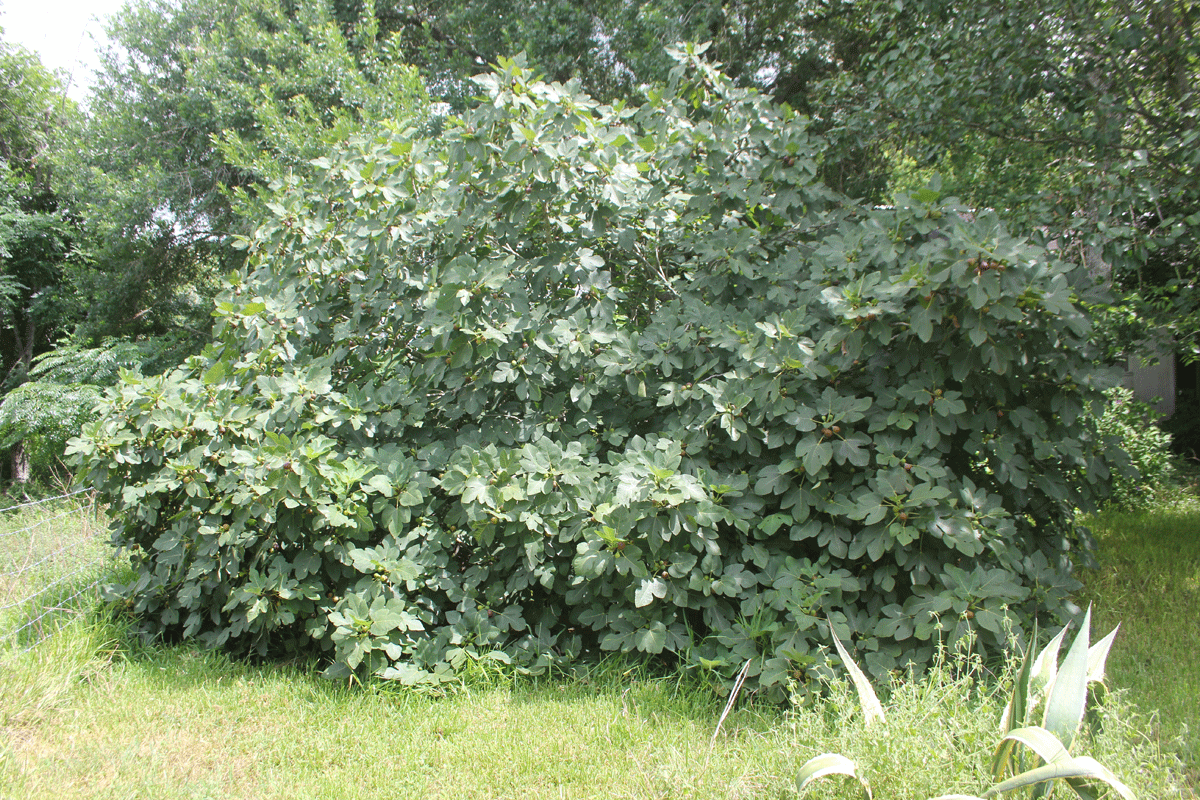Photo: A 108 year old fig tree planted in 1908 by my great grandfather.
Fig trees are common around old farmhouses in Goliad County. They were easily propagated and maintained and provided a fruit that could be eaten fresh or dried or preserved as a jam.
When my grandfather was an infant in 1908 my great grandfather built a new house. It’s the house my wife Susie and I now live in. About 25 feet to the northeast of the house he placed a smokehouse. Behind that smokehouse he planted a fig tree cutting. The placement of the tree was typical. Fig trees like water and the runoff from the smokehouse roof provided extra water when it rained. Even without rain, on dewy mornings condensation dripped off the roof. Dewy mornings are common here due to the high humidity and correspondingly high dew points.
The smokehouse no longer stands; all that is left is a concrete footer outlining the building, but 108 years later the tree still produces sweet fruits. As a child I picked and ate many a fig from the tree. The brown figs in the photo below are ready to eat. They are delicious as is or sliced up and put on my morning’s cereal.

When Susie and I bought the farm from my mother and moved here in 2000 and 2001, the tree had been neglected for several years as the house sat empty. The fence protecting the tree from grazing cattle and horses had fallen. The tree was a mere shadow of what it had been. The cattle and/or horses had broken the branches. The tallest shoot was only a couple of feet tall and there were only maybe a dozen of those. The first thing we did was build a new yard fence that enclosed the fig tree. We watered during dry spells and over the next decade and a half the tree responded by growing into a large round shrub about 25 feet in diameter and over 12 feet tall.
The tree is related to the Texas ever-bearing fig of the edible fig species Ficus carica. Our tree produces a very large crop of figs May through July and then, as long as it gets adequate water, continuously produces smaller numbers of figs until the first frost. In late November or at first frost the tree drops its leaves and goes dormant for the winter. The tree will also drop older leaves during hot dry summer periods.
We have cloned the tree via an ample number of cuttings. These have been distributed to friends and family and some have been planted around the farm. Each year we raise many cuttings for various fundraisers such as those for the Goliad Democratic Party and the Schroeder volunteer fire department.
There is something comforting about having a plant that has survived for six generations of my family, including great grandparents, grandparents, parents, me, my children, and my grandchildren.


Tim says
Not fish related but a wonderful story, thanks for sharing!!! Love the fact that it represents family tradition.
Shawn says
Great story. If you’d like to have a piece of that legacy growing on Maui I’d be happy to plant a cutting here. :) 978-423-9151
Charles Clapsaddle says
Shawn,
Does Hawaii allow cuttings to be shipped in without permits?
Charles